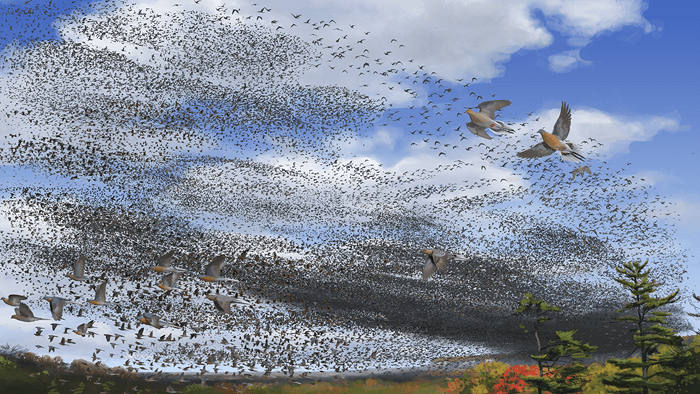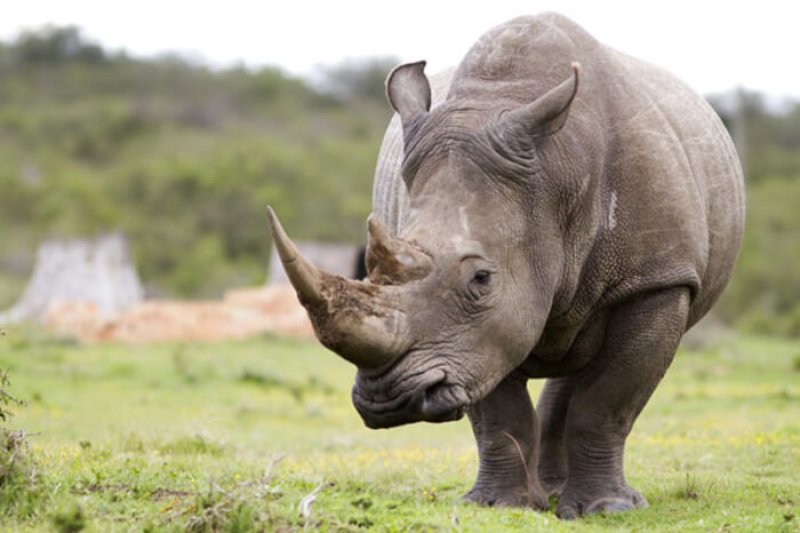Time has been called on the northern white rhinoceros, but this call is already being challenged. When the last male died on March 30, 2018, at the Ol Pejeta Conservancy in Kenya, the species was declared functionally extinct. Although the deceased rhino’s daughter and granddaughter remain alive, the species is no longer reproductively viable.
However, researchers at the San Diego Frozen Zoo believe they have the means to make this a brief extinction. The zoo’s archives include a large amount of cryopreserved northern white rhino genetic material. Because both of the northern females are infertile, the path to recovery runs through that of the southern white rhinoceros.
Whereas northern rhinos are facing extinction, its southern neighbor is doing exceptionally well. Approximately 20,000 roam in mostly South Africa, making it by far the most populous species of rhinoceros in the world. The northern and southern relatives are believed to have diverged from a common ancestor about 80,000 years ago as their habitats came to differ. However, genome sequencing and the successful artificial insemination of a southern white rhino by a northerner suggest that they are actually subspecies of a mutual species.
If hybridization is possible, then it is likely that cloning via nuclear transfer is as well. An unfertilized egg from a living southern white rhino could have its DNA removed and replaced with the nucleus of its northern neighbor. This is the same technique used in iconic clones like Dolly the sheep.

The methodology is more or less unquestioned and the team is proceeding apace. However, the project has been met with criticism inside and outside the scientific community. Though the genetic variation between northern and southern white rhinos is much lesser than that between true species, it is not immaterial. As such, the likelihood of harmful mutations in utero is probably elevated.
However, the biggest questions arise if the cloning is successful. The last wild member of the species was spotted in 2009; the species has since then survived fully in captivity. Both environmental degradation and poaching for horns led to the demise of the northern white rhinoceros. Habitat damage is arguably worsening, as is poaching: As rhino numbers decline, the value of the remaining horns increases through simple supply and demand. That leads critics to ask if it make sense to invest considerable resources to resurrect a species that will probably have to live entirely in captivity for the foreseeable future?
Jason Gilchrist, an ecologist at Edinburgh Napier University, believes it is unwise to revive a species that’s unable to return to its ancestral environments. “What I want is to see wild ecosystems functioning as close to naturally as they can,” he told The New York Times. He is worried that resurrected animals would “simply be living museum exhibits, destined to live out their lives in zoos, with habitat loss or poaching preventing life in the wild.”
Furthermore, the capital invested in these projects does not come out of a vacuum. The millions of dollars spent on de-extinction projects could go far in conserving other species whose situations are precarious. Three other species of rhino fit that bill. The Sumatran, Javan and black rhinos are all critically endangered, and many of those engaged in preserving them grumble about the money and attention being spent on a species they view as a lost cause.
In fact, a study published in Nature determined that spending limited resources on resurrection efforts could actually lead to a net loss in biodiversity. After the species was revived, it is likely that management of the newly extant species would fall to the government, as is largely the case with endangered animals. Given the inherent difficulty of managing a species that was unable to survive in the wild, this would almost certainly be a greater public cost than that of maintaining other endangered species. However, if private funds could be raised to pay for both the resurrection and the maintenance of the formerly extinct species, then it is possible that de-extinction could occur without reducing net biodiversity.

Such is the goal of a handful of startups, which plan to use nuclear transfer to bring back a gamut of extinct species. Most prominent among them is the Sausalito-based Revive and Restore, which aims to resurrect iconic species like the passenger pigeon. For co-founders Ryan Phelan and Stewart Brand, increasing biodiversity is the explicit goal of their organization. For example, the passenger pigeon was a keystone species in the hardwood forests of the eastern United States and Canada, and much of those areas have struggled since its demise. Furthermore, a bird like the passenger pigeon would almost certainly require a fraction of the resources that the northern white rhino would to re-introduce it into the wild.
However, the team stretches the biodiversity argument thinly when justifying some of its other projects, like reviving the wooly mammoth. They note that much of what used to be vast grasslands turned to tundra and taiga after the mammoth’s disappearance. And those areas are more vulnerable to the effects of climate change than are grasslands. While this is true, these environments have adapted in multifaceted ways in the thousands of years since the woolly mammoth’s extinction, and it is unlikely that the re-introduction of a few woolly mammoths would be able to reverse these long-ingrained changes.
Though proponents of resurrection technology will always claim biodiversity as their motivation, it appears that much of the motivation centers around human emotions. Conservationist researcher Joseph Bennett of Carleton University believes that inspiration would be one of the primary benefits of bringing back the northern white rhino, noting that it could be “a really nice ‘good news story’ for people.” Another common viewpoint is that reviving species that went extinct because of humans will grant us a form of atonement for our sins. There do seem to be a handful of cases, like the passenger pigeon, where the habitats would truly benefit from the revival of a species it used to depend on. However, humanity will not get moral redemption if it allows salvageable species to lapse into extinction due to an increasing focus on resurrecting a few charismatic, but costly, extinct species.
Sean Hall is a writer and engineering student at Santa Rosa Junior College exploring the overlap between politics and synthetic biology. Follow him on Twitter at @seantheserene.































